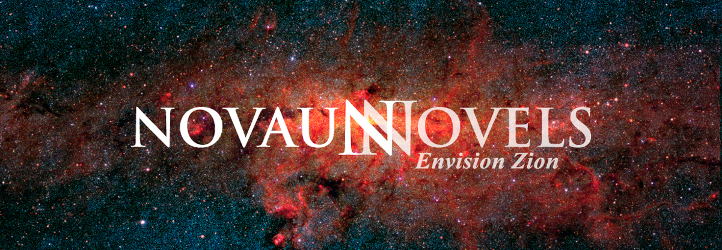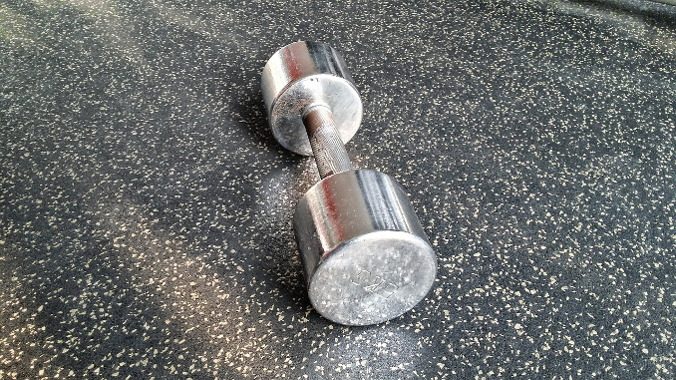I’m deviating from my normal blogging style for several months to share brief information about books that have significantly helped me obtain better health.
To read the first post in this series, “Books that Helped Me Lose 100 Pounds, Part 1: Introduction,” please click here.
To read the second post in this series, “Books that Helped Me Lose 100 Pounds, Part 2: The First 20,” please click here.
To read the third post in this series, “Books that Helped Me Lose 100 Pounds, Part 3: The Second 40,” please click here.
Disclaimer: I’m not a doctor or a dietitian. I do not recommend or endorse a particular health regimen. My intention is to provide a few insights into what has worked for me. The information in this post is no substitute for individual medical advice, and you use it at your own risk. I’ll tell you a little about my experience working with a dietitian in this post. Please keep in mind, however, that the advice I have received from her has been based on my individual needs.
In early April 2016, I met with the dietitian for the first time, committed to follow the advice she gave to me. She urged me to continue to use the My Fitness Pal (MFP) application, but she wanted me to customize the calorie and macronutrient goals. To my surprise, she didn’t suggest I lower my caloric intake and, in fact, wanted me to stay in the 1800–2000 calorie range I was in as long as I continued to lose weight at that level. She did, however, want me to pick a calorie goal and stick with it every day, whatever exercise I did. I decided on a goal of 1900 calories, since this was the number that MFP routinely gave to me.
I’ll tell you about some of the other advice the dietitian gave to me as I list books that have supported me in incorporating that advice. These books don’t mirror the dietary structure and information I was given exactly. They do, in fact, contradict each other on some points. The thing the first three books have in common is that they all advocate restricting high-carbohydrate foods, much in the same way that The DASH Diet Weight Loss Solution, which I told you about in my last post, does.
The dietitian advised me to eat more protein, particularly in the morning, and to eat fewer carbohydrates than I had long been accustomed to eating. I’m not supposed to eat more than two to three servings of high-carbohydrate food (roughly 30–45 g of carbohydrate) with every meal and no more than one serving of high-carbohydrate food (roughly 15 g of carbohydrate) with each snack. This dietary structure is similar to the one suggested in a book I had already read years ago:
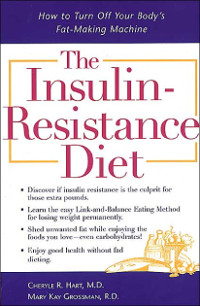
The Insulin-Resistance Diet, by Cheryle R. Hart, M.D. and Mary Kay Grossman, R.D. © 2001
“Discover if insulin resistance is the culprit for those extra pounds.
“Learn the easy Link-and-Balance Eating Method for losing weight permanently.
“Shed unwanted fat while enjoying the foods you love—even carbohydrates!
“Enjoy good health without fad dieting.”
Think of a balanced meal as a level seesaw. You want to make food choices that will keep the seesaw in balance every time you eat whether it’s a meal or snack. . . . Don’t let it tip to either side. (p. 35)
The eating plan described in this book contains a macronutrient ratio of 45% carbohydrate, 30% protein, and 25% fat. The authors recommend eating no more than two high-carbohydrate servings of food (or roughly 30 g of carbohydrate) with every meal and snack, although unlike my dietitian, they don’t count milk and beans as high-carbohydrate foods that need to be restricted, but use them as protein foods to balance out the carbohydrates, along with meat, eggs, and cheese. I, like the authors of The Insulin-Resistance Diet, was accustomed to counting milk and beans as primary protein foods. Taking the dietitian’s advice to count them as high-carbohydrate foods instead was a difficult—but critical—adjustment for me. That alteration, combined with limiting my high-carbohydrate foods and spreading them throughout my day, forced me to resolve several of the long-standing issues that had contributed to my obesity—issues I didn’t even know existed.
For many years, I believed that one of my bad habits was my inclination to become so absorbed in mental pursuits that I put off eating, which resulted in intense hunger later in the day that would propel me to unhealthy convenience foods. I worked to overcome that inclination and became somewhat successful by making sure I ate my meals and snacks on a loose schedule. What I didn’t realize was that my typical breakfast, lunch, and snack foods were giving me too many carbohydrates and not enough protein early in the day. Now that I’ve tightened my eating schedule and made the necessary adjustments to the foods I’m eating, I don’t experience that belated hunger nearly as much anymore, which helps me maintain better control over what I’m eating.
The other issues addressed—which I didn’t realize were so closely interrelated—were my disinclination to eat fruits and vegetables and my inclination to eat too many calories in added sugars and other refined foods. I’ve learned that when I can eat only eleven to twelve servings of high-carbohydrate food a day, I’m much more careful about the foods I eat. I look for carbohydrate foods that will give me the most value in both satiety and nutrition, which means I will almost always choose to eat a piece of whole wheat bread instead of a cookie. That, combined with being restricted to eating no more than 45 grams of high-carbohydrate food at a meal, makes it difficult to eat much added sugar. Ironically, by following the dietary structure recommended by my dietitian, I’ve finally been able to get my consumption of added sugars down—on a long-term basis—to the levels recommended by all of the health programs described in this series of posts. Lowering my sugar consumption in this way has enabled me to enjoy the sweet taste of fruits and vegetables in a way I never had before. In the past, I had to force myself to eat fruits and vegetables. When I was watching what I ate, I did. When I wasn’t being careful, I could go days without eating fruit. Now, I actually look forward to eating fruits and vegetables!
The next book was written more than a decade ago, but I first learned about it in 2014.
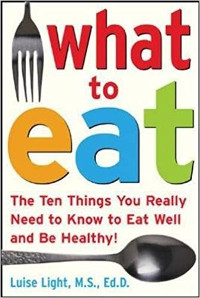
What to Eat, by Luise Light, M.S., Ed.D.
“With all the conflicting information about what and how to eat for good health, is it any wonder that the majority of us are both overweight and undernourished?
“In What to Eat, internationally respected nutrition expert Dr. Luise Light cuts through the confusion created by misleading advertising, fad diet doctors, and the big food lobbies to answer all your nutrition-related questions. Even more important, she arms you with a simple, research-based eating plan guaranteed to help you look and feel better than ever—without having to sacrifice taste or turn your life upside down.”
Dr. Light recommends a macronutrient ratio of 60% low-energy carbohydrates, 10–20% protein, and 30% fat. What to Eat gave me a new paradigm by which to judge my nutritional choices. Because some of the advice contradicted the mainstream nutritional advice I had long been trying to follow, I didn’t accept it immediately. To be specific, I resisted the counsel to lower my grain servings to 3–5 a day, and I couldn’t fathom the idea that butter was a healthy fat and that whole-fat dairy products (in moderate amounts) were healthier than the reduced-fat varieties I had been incorporating into my diet for over a decade. Imagine my surprise when the dietitian gave me a list of healthy fats (to be used in small amounts) that included butter!
Until I read this book, I hadn’t even considered the idea that much of the packaged food available to me wasn’t merely real food that had been treated with preservatives to prolong its shelf-life but was, in reality, synthetic food that had been engineered by manufacturers. When I finally began to perceive this fact, I felt foolish for remaining hoodwinked for so long, but the more I’ve read about this topic, the more I’ve come to realize that I was born into one of the first generations of American children to be raised on industrial foods.
In the past fifty years, food has been transformed into packaged products designed by industrial engineers for long shelf life, profitability, and repeat purchases. Clues about healthful eating that we once picked up in our daily lives have been wiped away by “progress,” obliterated as are most natural chemicals in food that have protected people for thousands of years, just as they protected other species of animals and plants themselves. Now, industrial farming and food processing have changed all that, and we are stuck having to learn anew what foods satisfy our palates and create health; we’re relying on brand names, labels, and marketing slogans instead of tried-and-true human experience.
Chapter 2
The next book on my list continues the advice given by Luise Light to eat whole foods, combined with up-to-date information on obesity.
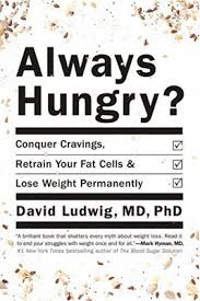
Always Hungry? by David Ludwig, M.D., Ph.D. © 2016
“For over two decades, Dr. Ludwig has been at the forefront of research into weight control. . . .
“ALWAYS HUNGRY? turns dieting on its head with a three-phase program that ignores calories and targets fat cells directly. The recipes and meal plan include luscious high fat foods (like nuts and nut butters, full fat dairy, avocados, and dark chocolate), savory proteins, and natural carbohydrates. The result? Fat cells release their excess calories and you lose weight-and inches-without battling cravings and constant hunger. This is dieting without deprivation.”
Overeating doesn’t make us fat. The process of becoming fat makes us overeat. In other words, hunger and overeating are the consequences of an underlying problem. Though this proposition sounds radical, consider what happens in pregnancy. The fetus doesn’t grow because the mother eats more; she eats more because the fetus is growing. With pregnancy, this is normal and healthy. With obesity, it’s not.
Chapter 1
The central concept of Always Hungry? is that while cutting calories will decrease weight for a short while, the body resists by increasing hunger and slowing metabolism. Sooner or later we succumb, and weight tends to pop back up, like an air-balloon being pushed into a bucket of water. In contrast, improving the quality of what we eat will reprogram fat cells to store fewer calories, in effect reducing the “body weight set point.” As a result, weight lowers naturally, as the balloon would if some water were drained from the bucket in which it floats.
Chapter 1
One of the most interesting things to me about this book is the similarity of its “fat thermostat” premise to the one in the book I told you about in the first post of this series, How to Lower Your Fat Thermostat. The premise is similar, but the prescription is very different in many ways, particularly in the level of fat recommended.
My dietitian counseled me to eat a macronutrient ratio of 40% carbohydrate, 30% protein, and 30% fat. I struggled to get my protein that high, so we modified my goal somewhat to be 40% carbohydrate, 25% protein, and 35% fat. In actual practice, however, my carbohydrate percentage is often a little lower, and my fat percentage is often a little higher. During the second phase of the Always Hungry? program, Dr. Ludwig recommends eating a macronutrient ratio that is close to what I’ve been eating for a little over a year now—35% carbohydrate, 40% fat, and 25% protein. I haven’t had to be as strict about the glycemic index of the carbohydrates I’m eating as he recommends for that phase, but, even so, my hemoglobin A1c is now out of the pre-diabetes range. My LDL cholesterol is slightly above the normal range, but my HDL cholesterol keeps moving up. My triglycerides number is half what it was a year ago—and it wasn’t out of the normal range to begin with. Not only that, but after all this time, I’m still eating in the 1800–2000 calorie range and losing weight!
Most of the health books I’ve read address the pitfalls of eating out, but the next one on my list provides comprehensive information that goes far above and beyond any I’ve encountered anywhere else.
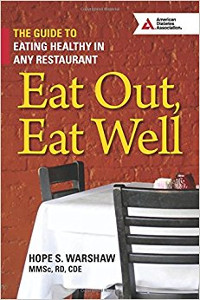
Eat Out, Eat Well by Hope S. Warshaw, M.M.Sc., R.D., C.D.E. © 2015
“The average American will eat out at a restaurant five times this week, and while there are healthy choices available at restaurants, it’s not always clear what they are. Fortunately, Hope S. Warshaw has created the ultimate guide to eating healthy—and eating well—in restaurants for people with diabetes, prediabetes, heart health, or those just looking to lose a few pounds. In Eat Out, Eat Well, Hope has created individual strategy guides for a wide variety of cuisines, ranging from everyday burger shops to ethnic choices. Each style of restaurant includes healthy meal options, which recommend certain dishes and portion sizes. There’s information on what to avoid and how to go about the making special requests. Each restaurant style also includes nutrient counts to help identify healthy choices. For anyone trying to manage their diabetes but looking to have dinner out, this is an indispensable guide.”
Most of the meal plans she gives generally follow the 50% carbohydrate, 20% protein, 30% fat ratio, but she does provide some meal plans that have a lower percentage of carbohydrate and higher percentage of protein compatible with the dietary structure I’m currently using. The meal plans contain dietary exchanges and some nutritional information.
I need this book! As the primary food provider in my family, I regard eating out as a mini-vacation. My instinct is to treat myself, which makes it difficult to make the best choices. The most effective strategy I’ve found for making reasonably healthy choices when I eat out is to study the online menu and choose what I will eat before I go, if I can. I also carry a list of the foods I can eat (and those I know that I will regret later when I enter them into my food diary!) at the various fast food restaurants my family patronizes. That way I won’t be caught off-guard when we make a spontaneous stop for restaurant food.
My dietitian gave some exercise advice to me when I first met with her, and, in some ways, it was more difficult to follow at first than the nutritional counsel. She told me that I needed to add a couple of sessions of strength-training a week to my exercise regimen and recommended that I work with a personal trainer so that I would learn how to do the exercises correctly. I had never done any kind of strength-training or been to a gym; I thought personal trainers were for highly-fit people—not for obese middle-aged people like me. I’ve since learned differently. At the particular gym I patronize, people of all ages and fitness levels work out and receive help from personal trainers.
One of my sons has a good friend who’s a bodybuilder and personal trainer. At the end of April 2016, I began working with her once a week and doing the exercises she gave to me on my own another time or two a week. The dietitian’s advice to add strength training to my biking was exactly what I needed to round out my fitness routine and increase my level of exercise in a way that helped me progress. My trainer is amazed by how strong I’ve become, and I’m amazed by all the stamina I now have.
Because I’ve received very little instruction from books devoted to the subject of exercise, I didn’t have any to recommend until I found the one below. It contains motivational helps as well as instructions—and sometimes photographs—of many of the basic exercises my trainer has had me do. It also contains various types of workouts and would be of benefit to both beginners and those experienced in exercise.
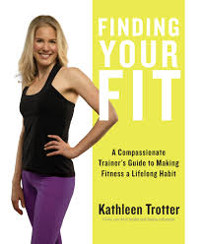
Finding Your Fit, by Kathleen Trotter © 2016
“Wanting to get on track and actually getting (and then staying) on track are two totally different things. The million-dollar question is: how do we find the inner motivation to go from thinking about a healthier lifestyle to actually adopting one? How do we get off the sofa and out the front door? Finding Your Fit: A Compassionate Trainer’s Guide to Making Fitness a Lifelong Habit provides readers with practical tools that will allow them to connect the dots between wanting to make a health and fitness change, and actually making it.”
Remind yourself that movement is a privilege and that the point of moving is not solely to lose weight—it is to feel stronger, to have more energy, and to improve your overall health.
chapter 8
Stop trying to find the “perfect” diet to follow. When you follow a predetermined diet or exercise plan—one that is not individualized, reflective, or intuitive—it is too easy to fall off the program and revert completely back to old, unhealthy habits.
More important, since the cause of weight gain are multifaceted and vary from person to person, what causes weight loss will also vary person to person. Our eating habits are tied to our emotions, our established habits, our lifestyle, and our childhood eating habits. . . .
Explore your unique relationship with food; pinpoint your trigger foods and situations, and the nutrition and exercise habits you most need to improve on.
Chapter 6
What Kathleen Trotter says rings true to me, because it matches my own health journey. I’ve learned many useful things from a multitude of sources, but in the end, success has come by dealing with my personal health issues in a way that works for me as an individual. Has the struggle been worth it? Absolutely! Do I regret the sacrifices I’ve had to make along the way? Not at all! I felt this truth keenly not long ago when my husband unexpectedly came home early on an unseasonably warm winter day and suggested we go on a bike ride—my first outdoors on an actual bicycle in three months. I had already been on an hour-long walk earlier in the day, but I really wanted to ride my bike, so I agreed to go. I was afraid I would be too tired to ride as far as usual, but my fears were unfounded. Not only was I not tired, I rode eleven miles and didn’t even feel it! Fifteen years ago—when mere household tasks exhausted me—I couldn’t have even dreamed that such a feat would ever be possible for me. The feeling of freedom and happiness that comes with having a body that can do such a marvelous thing after so many years of obesity is exhilarating, and I would not trade it for any of my old habits—or my old clothes!
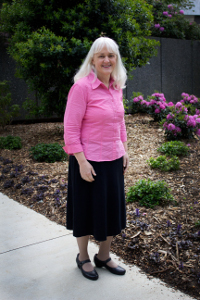
The featured image came from Pixabay.
